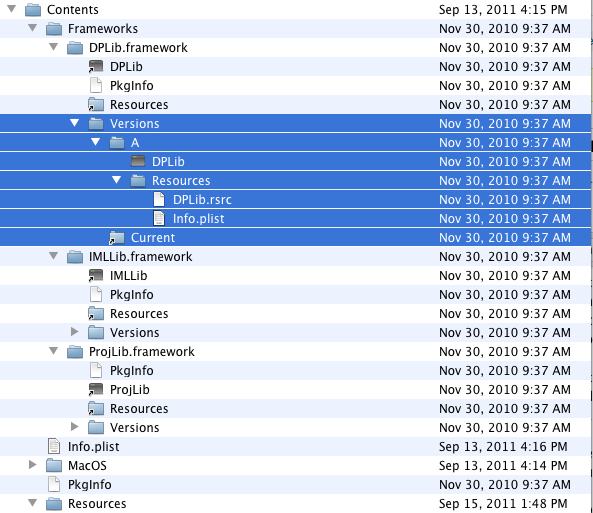In git you clone a project—not checkout like in Subversion. You’ll probably want to put it in a directory that has a name that is the same as the project (or related to the project name).
$ git clone git://github.com/hubuser/importantProject.git importantProject
If you are hosting your own git server, you’ll probably use something like this.
$ git clone username@yourdomain.com:/www/importantProject/ importantProject
Once you’ve cloned the repository you’ll have the exact same files and file structure as the original. You’ll also be in the master branch.
$ git status
On branch master
Your branch is up-to-date with 'origin/master'.
nothing to commit, working directory clean
You’ll also get a .git directory with the following files.
$ cd .git
total 28
-rw-r--r-- 1 username staff 23B Jun 2 09:31 HEAD
drwxr-xr-x 2 username staff 68B Jun 2 09:31 branches/
-rw-r--r-- 1 username staff 312B Jun 2 09:31 config
-rw-r--r-- 1 username staff 73B Jun 2 09:31 description
drwxr-xr-x 11 username staff 374B Jun 2 09:31 hooks/
-rw-r--r-- 1 username staff 8.8K Jun 2 09:34 index
drwxr-xr-x 3 username staff 102B Jun 2 09:31 info/
drwxr-xr-x 4 username staff 136B Jun 2 09:31 logs/
drwxr-xr-x 4 username staff 136B Jun 2 09:31 objects/
-rw-r--r-- 1 username staff 107B Jun 2 09:31 packed-refs
drwxr-xr-x 5 username staff 170B Jun 2 09:31 refs/
Now suppose I modify my robots.txt file.
$ git status
On branch master
Your branch is up-to-date with 'origin/master'.
Changes not staged for commit:
(use "git add <file>..." to update what will be committed)
(use "git checkout -- <file>..." to discard changes in working directory)
modified: robots.txt
no changes added to commit (use "git add" and/or "git commit -a")
$ git diff
diff --git a/robots.txt b/robots.txt
index 90098a4..3aa5532 100755
--- a/robots.txt
+++ b/robots.txt
@@ -1,3 +1,5 @@
# robots.txt for http://www.rememo.info/
User-agent: *
+Disallow: /order/
+
Before we commit the file, we need to stage it. The status command above tells you how to to it.
$ git add robots.txt
We can see the staged changes with:
$ git diff --staged
diff --git a/robots.txt b/robots.txt
index 3aa5532..abd2889 100755
--- a/robots.txt
+++ b/robots.txt
@@ -3,3 +3,4 @@
User-agent: *
+Disallow: /order/
Now $git diff returns nothing because there are no unstaged changes.
We can add and commit it in one command.
git commit -a
[master 4623ad2] Added a disallow
1 file changed, 2 insertions(+)
Alternatively, you can combine the commit with the message.
git commit -a -m "Added a disallow"
[master 4623ad2] Added a disallow
1 file changed, 2 insertions(+)
You can remove files from the repository by deleting them from your work area. They will show up in the unstaged area or you git status output. You can also use git rm to remove a file.
Likewise you can rename a file with mv originalName newName and git will notice. Or you can use git mv originalName newName.
You can view the commits that you have made with git log.
$ git log
commit 4623ad2cbe4163e2d013c7e53728023e4d7163e6
Author: User Name < username@WellGolly.com >
Date: Tue Jun 3 07:55:00 2014 -0700
Added a disallow
commit 065b7362f9ad19d6e2fe69cde9629abf0beabb95
Author: User Name < username@WellGolly.com >
Date: Mon Feb 24 09:00:03 2014 -0800
Changed site name and added blank line at end of files
commit 61277e4d12636044e9b873608c325470d98577e0
Author: User Name < username@WellGolly.com >
Date: Mon Feb 24 07:50:56 2014 -0800
Started tracking changes to site with git.
If you want to see the changes that were made as well, use the -p option (page option) and the output will be piped into a pager where you can page through all the changes. Hit ‘q’ to quit the pager.
You can browse the commit messages with the –pretty option.
$git log --pretty=oneline
4623ad2cbe4163e2d013c7e53728023e4d7163e6 Added a disallow
065b7362f9ad19d6e2fe69cde9629abf0beabb95 Changed site name and added blank line at end of files
61277e4d12636044e9b873608c325470d98577e0 Started tracking changes to site with git.
Once you have identified the commit you want more info on you can display the info with git show and the first few digits of the hash. Usually five digits is enough to uniquely identify the commit, but you can use all of them if you want.
$ git show --format=raw 4623a
commit 4623ad2cbe4163e2d013c7e53728023e4d7163e6
tree 9c73a1afbfb9ec4930d3d4ac8d906e6ae4683df6
parent 065b7362f9ad19d6e2fe69cde9629abf0beabb95
author User Name <username@WellGolly.com> 1401807300 -0700
committer User Name <username@WellGolly.com> 1401807300 -0700
Commit message
diff --git a/robots.txt b/robots.txt
index 90098a4..3aa5532 100755
--- a/robots.txt
+++ b/robots.txt
@@ -1,3 +1,5 @@
# robots.txt for http://www.rememo.info/
User-agent: *
+Disallow: /order/
+
Often you might be looking for the last time a particular file was changed. –name-only gives the name of the file, the commit message, and the hash.
$ git log --name-only
commit 4623ad2cbe4163e2d013c7e53728023e4d7163e6
Author: Gordon Miller <developer@well.golly>
Date: Tue Jun 3 07:55:00 2014 -0700
Added a disallow
robots.txt
commit 065b7362f9ad19d6e2fe69cde9629abf0beabb95
Author: jscarry <jscarry@learningfundamentals.com>
Date: Mon Feb 24 09:00:03 2014 -0800
Started tracking changes to site with git.
Reminder/README.txt
Reminder/Reminder.inc
:
